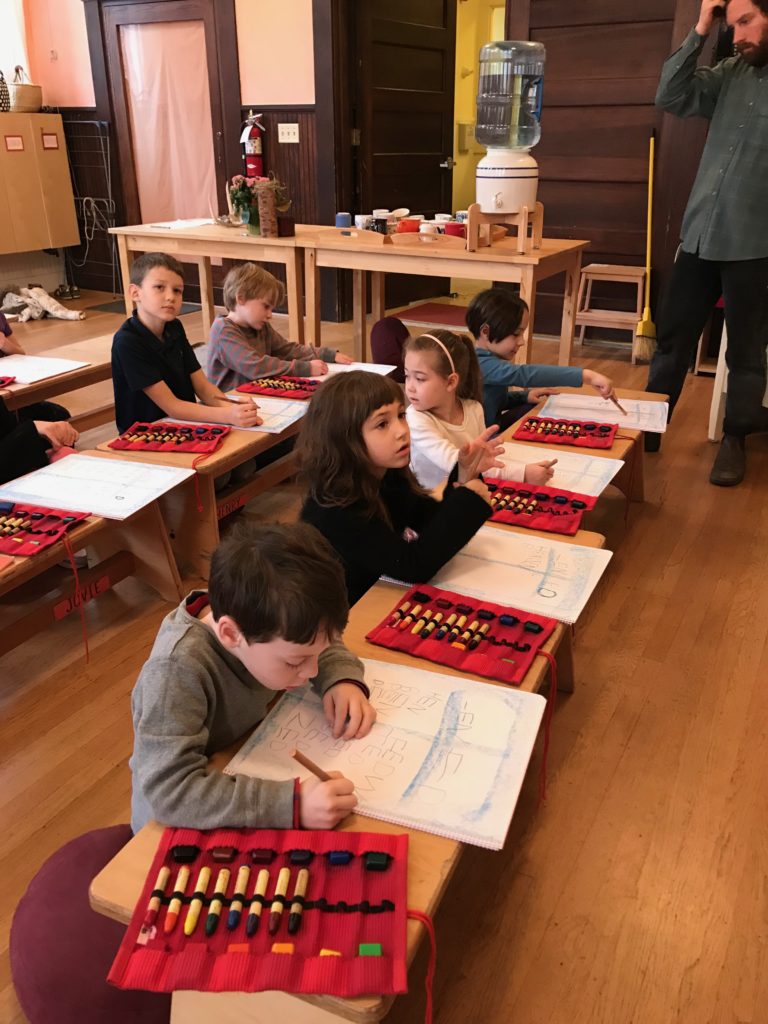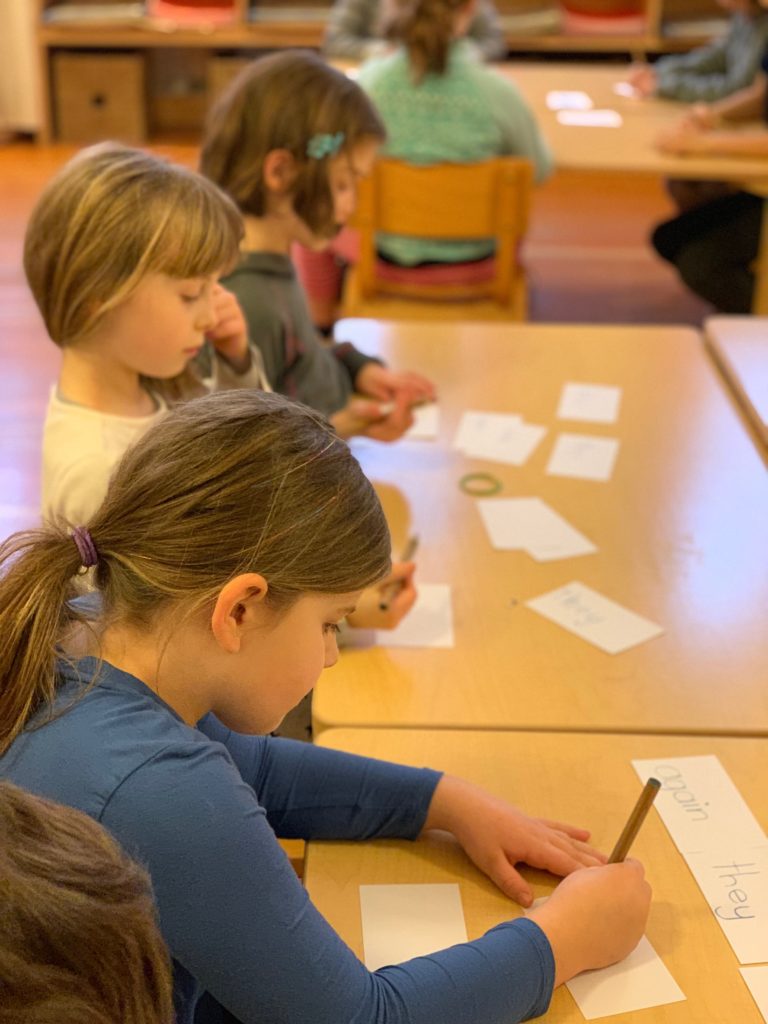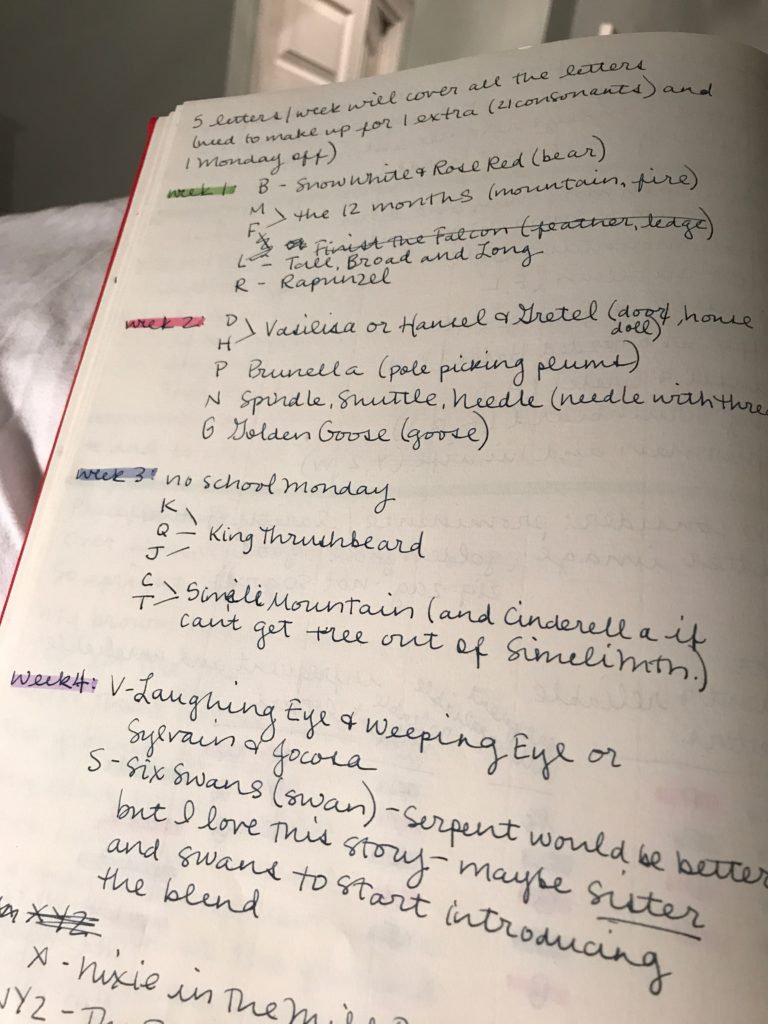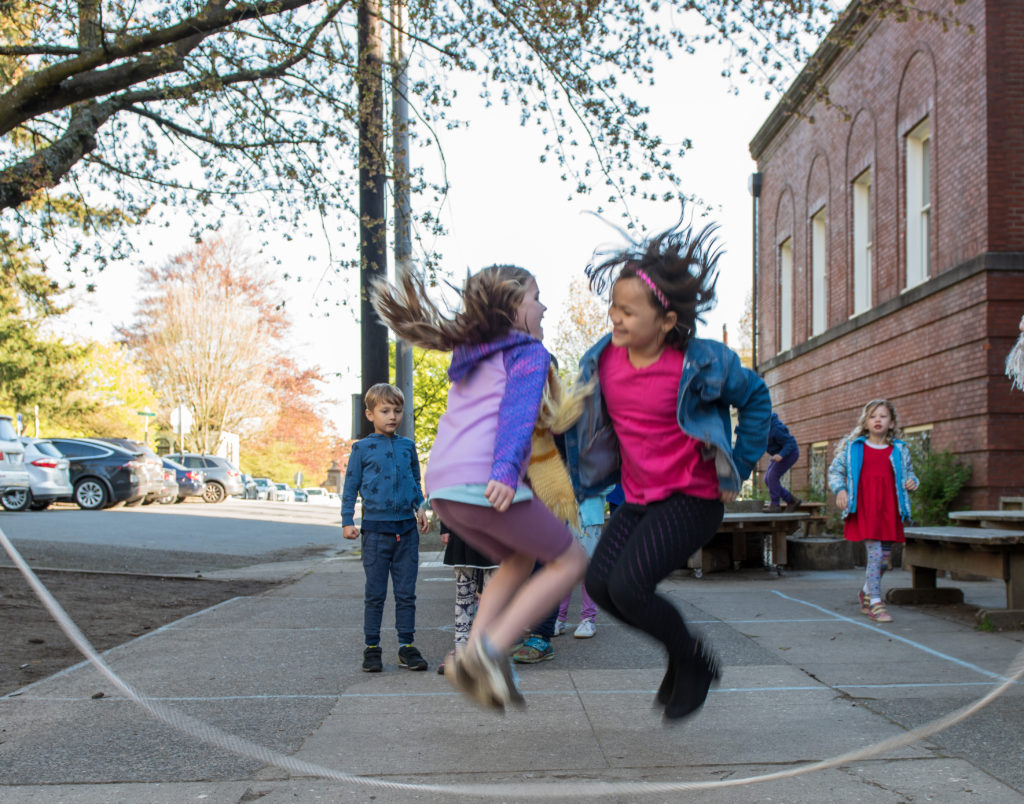I’ve been doing some mentoring and evaluation work lately, which has gotten me into lots of different teachers’ classrooms. I love seeing how other people teach and helping them find ways to streamline and inspire their work.
Interested in knowing more about my evaluation and mentoring services? Click here.
One of the things I’ve been noticing in both my own and others’ classrooms is the importance of rhythm.
I remember when I first started teaching I felt like the two-hour-long main lesson was an absolute eternity! I thought, “How can I possibly fill two hours with meaningful content?!”

In those first few years, I certainly did fill the time with meaningful content, but I worked HARD to create those lessons. See, back in those days I didn’t understand the value of rhythm. Every two-hour lesson was brand new and created entirely from scratch. This took a TON of time every night!
It didn’t take me long to realize how much a healthy rhythm can help.
Why is rhythm important?
Now that rhythm is such a strong part of my teaching, I’ve realized why it is so valuable.
Rhythm is comforting for children.
When you have a consistent rhythm, your students know what is coming next. This puts them at ease as they move through the day. They like knowing when different activities will come up and they even begin to anticipate them.
Of course, I notice this most on the days that are out of rhythm. Whenever there is an assembly or a field trip, my students are thrown off and require a lot more of my attention and direction. Inevitably there are more squabbles, more boundary-pushing and more mistakes. (Or should I say “growth opportunities”?)
Rhythm makes classroom management easier.
When students can anticipate activities, they don’t need you to instruct and remind. For example, every day my students play flute after circle. It has become such a consistent part of our routine that as soon as they return to their desks after circle, they begin taking out their flutes and getting ready to play. I don’t have to say a word!

As a parent, I have used rhythm for those tasks that my children find tedious or unpleasant. There were lots of examples from when they were little, but these days I have teenagers and I’ve found rhythm just as useful. For awhile my son was avoiding working on his SAT prep materials. We realized we needed to establish a rhythm around it so it would consistently happen. We tied the rhythm to dinner (which has to happen every night) to make it even easier.
Rhythm makes lesson prep SO much easier.
Now that rhythm is such a strong part of my lessons, they are so much easier to plan! In fact, all but about 20 minutes of every 2-hour lesson is held by a rhythm. Those 20 minutes are my daily story or new content time. There’s no way around preparing that every night. But luckily, it’s the part of the lesson that I find most interesting. (Want to read more about my block prep? Click through to read this post.)

The rest of the lesson is filled with rhythm that follows a consistent pattern. The specifics need refreshing now and then, and I usually give my attention to this weekly.
Here’s a look at my current rhythm, as an example.
Opening/Warm-Up — 20 minutes
- Outside jump-rope (same all year)
- Handshake, greeting songs, verse (same all year)
- Housekeeping — attendance, schedule (same all year)

Artistic Work — 15 minutes
- Circle Activities — folk dance, seasonal poem, beanbags, movement exercises (refreshed with a new activity approximately weekly)
- Flute (a new song once/month or so)
Practice Activities — 20 minutes
- New phonics rule or math concept refreshed weekly, activities vary according to the day of the week. Sometimes daily prep is necessary to create the practice activity (if written). I usually only do a written activity if we are not doing a main lesson page that day.
Review/Bookwork — 20 minutes
- Remember the previous day’s new material. Work with that material in some way, usually a main lesson page (drawing or writing). Daily prep required to create the page.
New Content — 20 minutes
This is the part of the lesson that requires the most daily prep, but as I mentioned, it is my favorite. I love figuring out the story I’m going to tell, taking notes on it and preparing to tell it to the class.
Now, if you’re counting up the minutes, you’ll see this totals about an hour and a half. These times are definitely estimates. Usually it is the warm-up that takes us a little bit longer. I also really love doing artistic work with my students, so that sometimes goes long, as well. And if I don’t go long that just means we get a little extra time for snack and recess. Yay!
I go into a lot more detail about lesson prep in my Curriculum Planning E-Course. If you feel overwhelmed about planning that 2 hour lesson and want a little more handholding, this course is for you.
So how much do I prep?
So, because of this strong daily rhythm, my prep rhythm looks like this.
- Monthly — map out the block, decide which stories to tell, which phonics to focus on, etc. A lot of this work is figured out in the summer.
- Weekly — Bring one new artistic/movement activity; consider phonics rule for the week, map out activities, sample words, etc. This takes me about two hours on a Sunday afternoon. I sit at the piano and figure out melodies, create clapping rhythms, etc.
- Daily — Prepare new content and bookwork or practice activity. This takes 1-2 hours/day. I often do this at home in the morning before school. I like to get up early and linger over my coffee.
The other thing to mention, of course, is that because I have built such a nice rhythm around this work in my own life, I enjoy it more and it doesn’t feel like work. See, rhythm is good for grown-ups, too.
I share a lot more specifics about the rhythms and content I use in my block-by-block curriculum guides. I currently have guides available for 1st, 2nd, 4th, 5th, 6th, 7th and 8th grades. Lots of good information there!
Where is rhythm really strong in your life? What are the moments that could be made easier by the power of rhythm? Let’s chat in the comments!




Leave a Reply